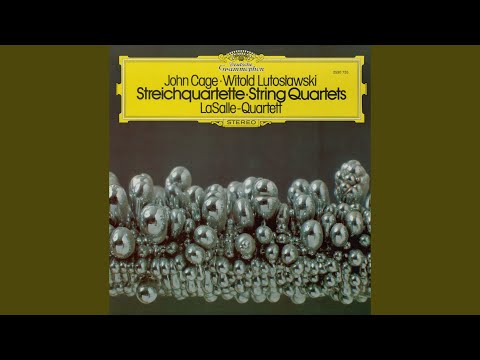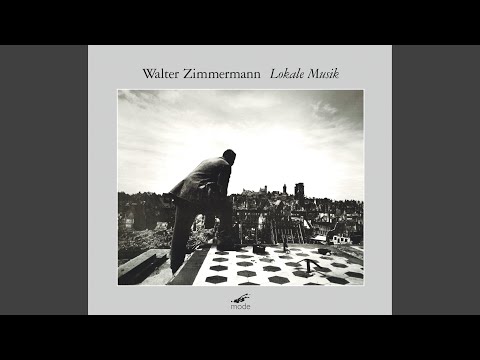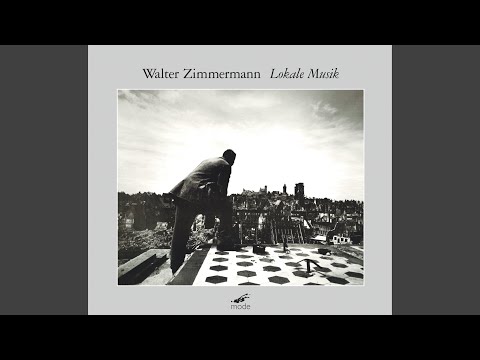Walter Zimmermann’s music has a rare combination of stasis and flow. It wanders without being lost. It communicates calm curiosity and curious calm. Many composers have written music about nature, but Zimmermann’s is one of the few musics that seems as if nature itself could have created it.
In April, he turned 75. On Friday, Galerie Max Hetzler in Berlin will open an exhibition, curated by André Butzer, of new paintings inspired by Zimmermann’s music. It will include a concert by Ensemble Adapter and a documentary. Zimmermann was professor of composition at the University of Arts in Berlin from 1993 until his retirement, and his legendary book, Desert Plants: Conversations with 23 American Composers, was essential in convincing the German new music scene that American contemporary composition had diversity, quality, and powerful expression to offer. I met Zimmermann on a sunny morning in his Berlin apartment, where we spoke in a mixture of German and his excellent English about the labyrinth of listening, the influence of John Cage, and the balance between architecture and intuition.
VAN: Do you use the term “melody” in relation to your music?
Walter Zimmermann: Indirectly. The problem with melody is that it’s very difficult to build a melody that genuinely belongs only to itself and not to someone else, that hasn’t been overheard or lifted from another source: the streets, folklore, opera, the tradition.
When I talked to my students about melody, I often told them, “You don’t need to glue the notes of your melodies together with putty. The soul, the mind, the person who hears it will make the connection themselves. Separate out the individual notes. The listener’s understanding has a synthetic function. He wants to understand, and he will synthesize automatically, unconsciously—no matter his level of education. You should make sure to permeate your melodies with pauses, caesuras, spaces to breathe.”
My work with Cage’s systems before his I Ching period was very helpful for understanding that. At that time, Cage was working with magic squares and the smallest possible mosaic-tile units that nevertheless had meaning. He used aggregates that were combined in constantly changing ways. In the “String Quartet in Four Parts,” for example, which is made up of 64 aggregates, he did not combine the aggregates randomly, but used a different system. And the upper contour created a melody, a series of new melodies. But these are melodies that don’t evoke the aura of a specific culture. They are self-sufficient, independent. That’s the wonderful thing about Cage: He finds the balance between individual expression and the search for objectivity, so that the result belongs to no one and everyone. That’s important with melody, too: that it belongs to everyone and no one.
The opposite approach would be to compose the melody from the gut, so to speak. That’s the method composers used from the Romantic period through Neo-Expressionism. But the constructivist way of working I’m describing is essentially the same thing as composers did in the Renaissance and Baroque periods, where the concept of the I didn’t exist: Nobody thought, I’m expressing myself. They composed for a community, for everyone and no one. Of course, they composed for the court and for the princes, but it was a different mode of expression: modest, subtle, underexposed. And that was because of the highly specific formal requirements they had and the structural scaffolding they worked with.
That was all thrown away at the end of the 20th century. We’re free now. But we’re still prisoners of our own egos, aren’t we?
Is it enough to create a structure, produce musical lines with that structure, then let the listener synthesize those lines into melody?
It’s like a labyrinth. You try here, then go this way, come back, try another path. Or you move as in a game of chess: You think through the different possible paths in your mind. In the Baroque period there was a widely shared sense of the forms, they were common creative property. You can’t say that that’s true of musical form anymore. Today, every composer creates his own world. But the artistry is to give that world a sense of universality. Not a proscribed universality—I dictate how you have to understand me—but allowing the listener to find the understanding themselves. It’s more like an open garten with several different entrances than a red thread that you have to follow—pedagogically, dictatorially—in order to understand. It’s not going from A to B. It’s a spatial structure of hearing or understanding.
In your pieces, I often feel a sense of balance, although there’s little obviously repeated music or predictability…
I started this kind of field theory with “Lokale Musik.” “Ländler Topographien” was very influenced by Cage’s “Quartets I-VIII.” That’s an orchestra piece in different versions, based on church anthems from New England. The music is for four-part choir, and Cage subtracted notes using the I Ching: Using a random process, he erased notes. The music becomes fragmented; you might barely hear that it’s based on a church anthem, or you might not. The balance you mentioned: That exact thing is there. Then he orchestrated the piece for a large orchestra, but just single notes, projected onto a starry night.
It’s a fantastic piece. There are never more than four instruments playing at once. It’s so radical. I remember going to a performance, and the musicians were really off, because they are so used to leaning on the musician playing next to them or on what they hear nearby. In “Quartets I-VIII” they are completely naked. It’s really, really hard.
That influenced me to make “Ländler Topographien.” In the first part, I projected the inner landscape of a ländler dance outwards, so to speak. In the second part, I used the external landscape: geological maps from the areas where the dances originated, and drew a kind of line. The surface morphemes, or the rock formations, were important for the instrumentation.
In “10 Fränkische Tänze,” I tuned the dances in two overtone rows, and then used only natural harmonics. All the notes that worked, I kept; all the ones that were impossible, fell through the net. The result was a fragmentation of the original. In every piece, I developed a new principle, with the goal of sublimating the aggression inherent to that music. That led to unbelievable accusations at times—I was booed in Darmstadt, because they didn’t understand the idea.
I always say that this folk music was originally meant as a territorial imperative—as a way of telling people, You don’t belong here. It represents a reactionary point of view. Even after the war, it was still played that way sometimes, and kitsch-ified. I was trying to get rid of that, to reveal the inner beauty of the melodies. That’s the reason for the filter technique, to make all that more or less disappear.
Once you’ve built a structure, to what extent do you intervene in it?
That’s when the real composing starts. At first, you have a structure, an architecture: I’m doing this, not that. Then you write, from A to B, and of course the composer’s memory structure comes in, in the best case. You start making subtle corrections: If I do this again, it’ll be redundant. I’ll skip it. Or, I’ll bring this back, so that the listener will remember it. I’m not a slave to the system: Instead, the system is on one side of the scale and my intuition is on the other. In the best case, they are in dialogue with one another. ¶
Subscribers keep VAN running!
VAN is proud to be an independent classical music magazine thanks to our subscribers. For just over 10 cents a day, you can enjoy unlimited access to over 875 articles in our archives—and get new ones delivered straight to your inbox each week.
Not ready to commit to a full year?
You can test-drive VAN for one month for the price of a coffee.





